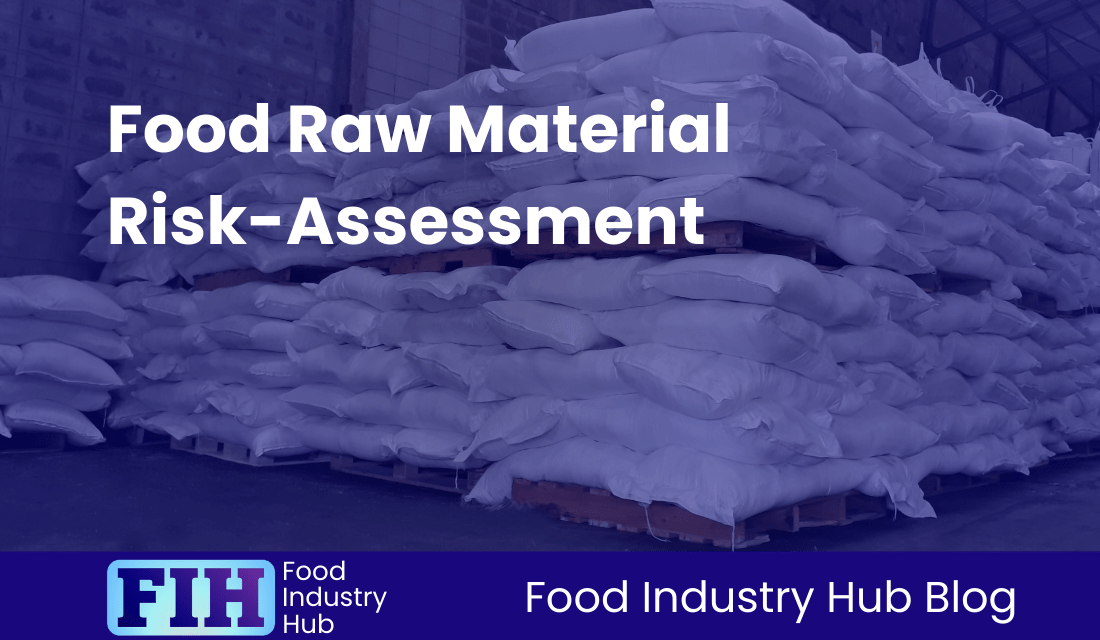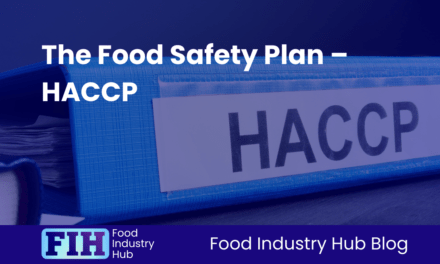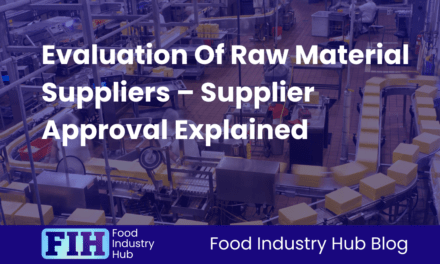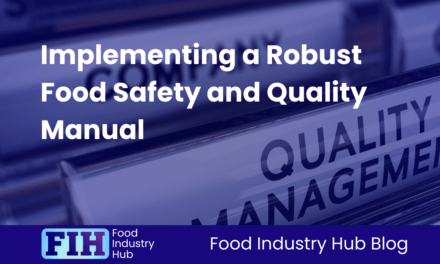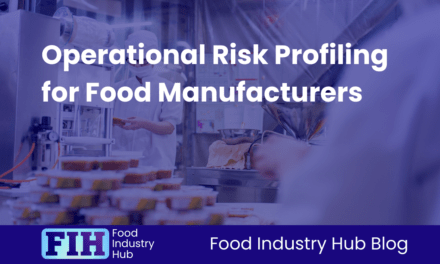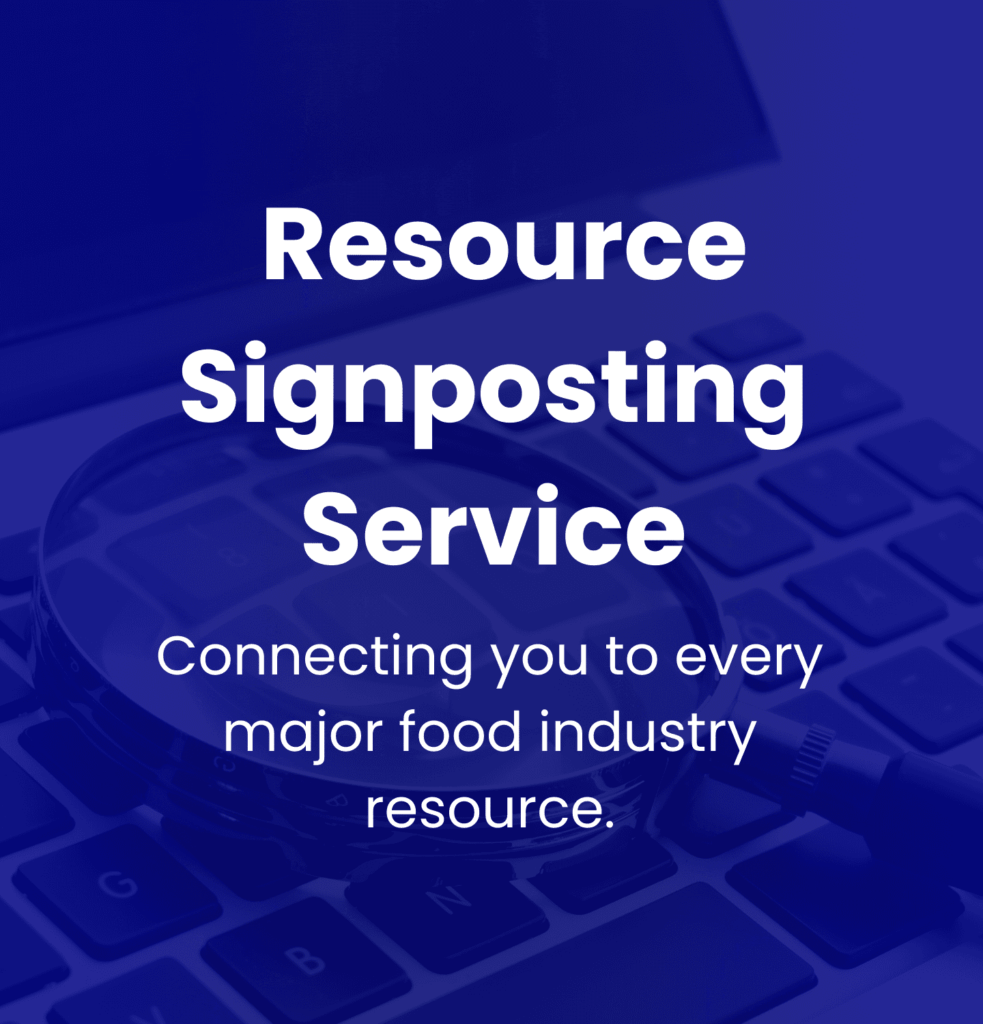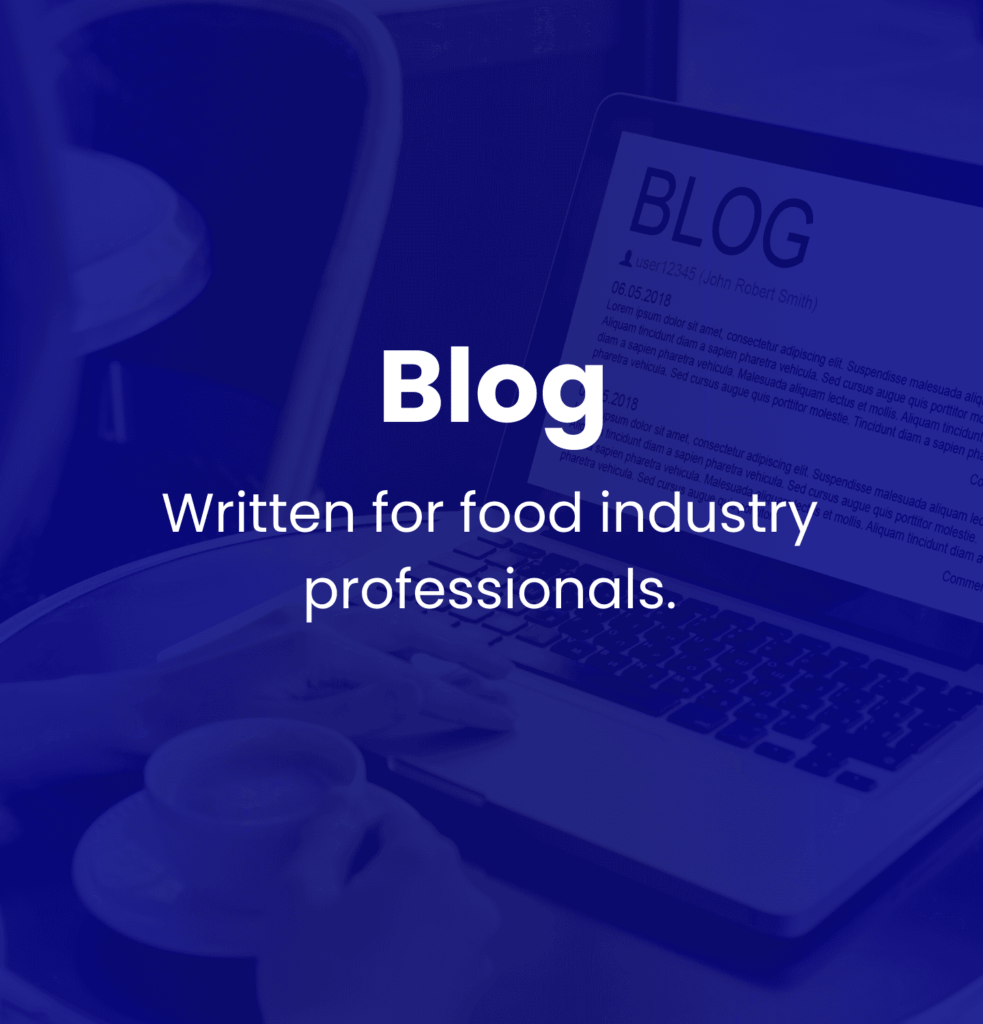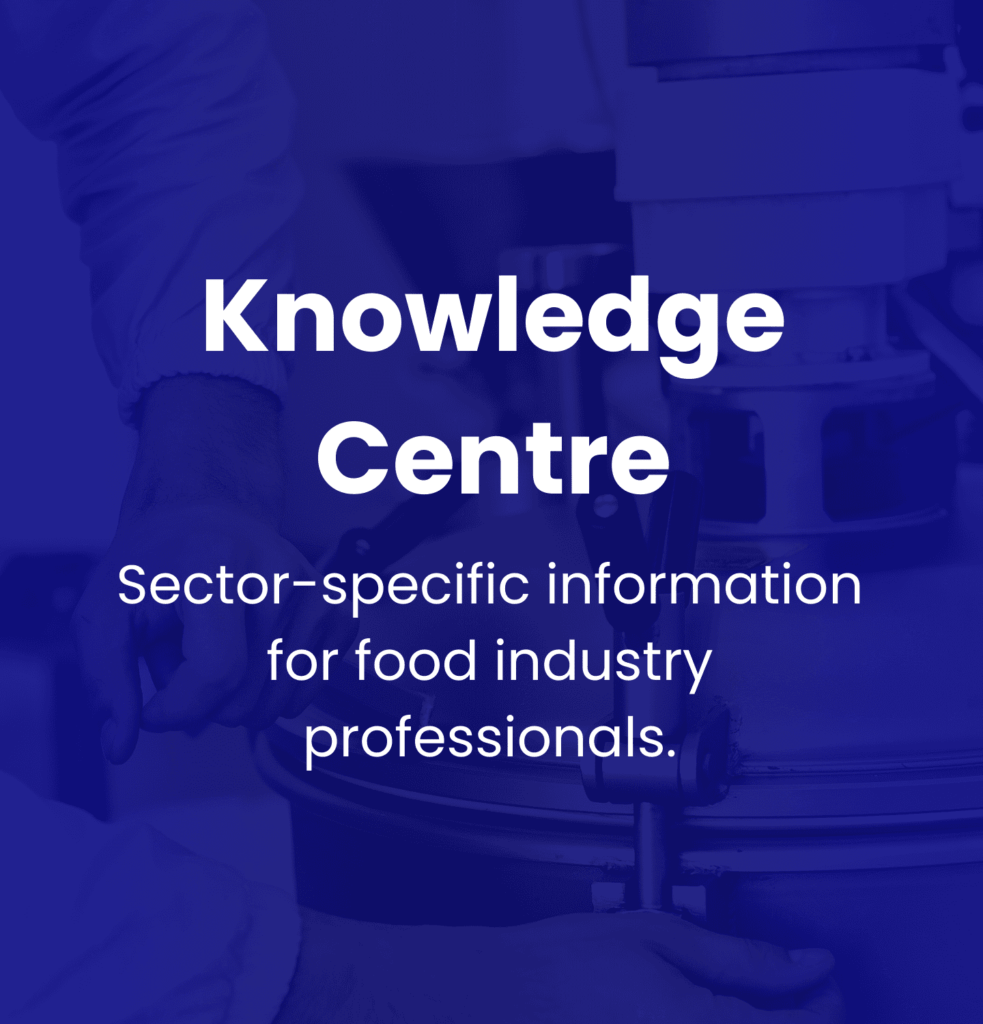Introduction
In food manufacturing, raw materials form the foundation of your finished products, making their safety, quality, and compliance critical to your operations. A raw material risk assessment is a proactive tool that enables you to identify, evaluate, and mitigate potential risks at every stage—from sourcing to processing. By addressing factors such as supply chain vulnerabilities, legislative controls, allergens, and microbiological or chemical hazards, you can safeguard your processes against failures that could compromise product integrity or consumer trust. Understanding and implementing a robust risk assessment framework not only protects your business but also demonstrates your commitment to excellence in a competitive and highly regulated industry.
As we dive into the topic, you’ll be interested to know that Food Industry Hub offers integrated management systems for food manufacturers, which you can use to strengthen your assurance processes.
Table of Contents
Key Takeaways
- A comprehensive raw material risk assessment identifies and mitigates risks related to composition, supply chain vulnerabilities, allergens, microbiological and chemical hazards, and quality attributes.
- Regulatory requirements, such as compositional standards and additive limits, must be integrated into risk assessments to ensure compliance and product integrity.
- Effective supplier management, including assurance of manufacturing site standards and audit documentation, is critical for controlling risks associated with raw materials.
- Consideration of packaging formats, such as staple-free designs and plastic pallets, helps minimise physical contamination risks in production environments.
- Continuous review and adaptation of risk assessments are vital to address evolving regulatory landscapes, emerging risks, and customer-specific demands.
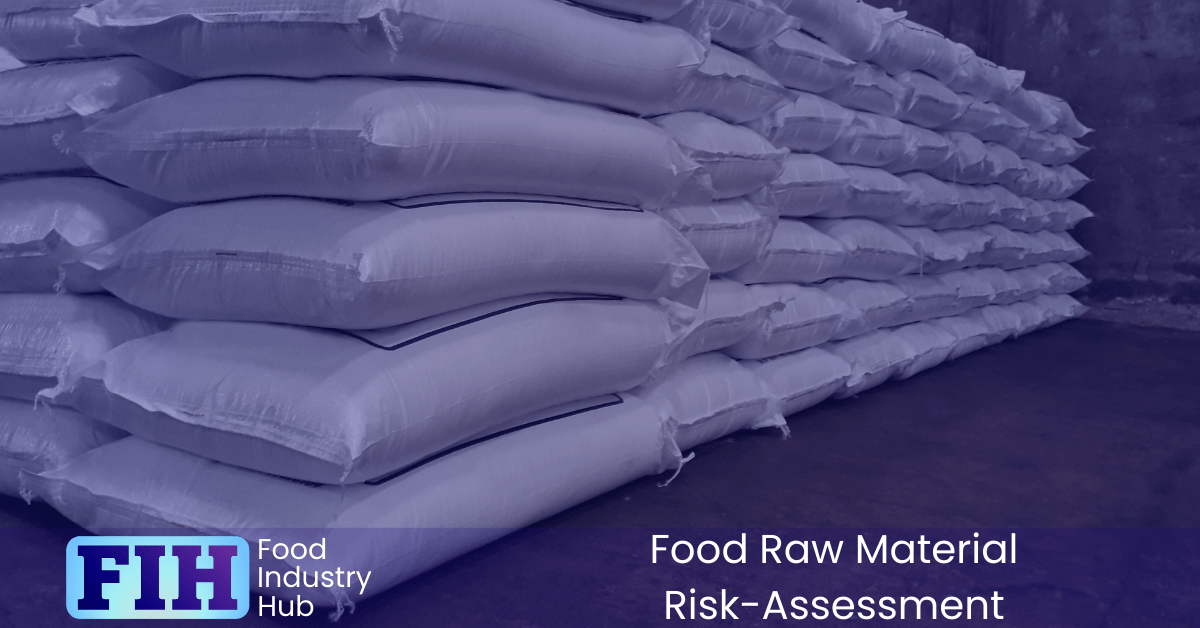
Food Industry Hub Management Systems can significantly boost the effectiveness of your food safety and quality management system, leading to improved confidence and elevated quality assurance throughout your operations.
What is a Raw Material Risk Assessment?
A raw material risk assessment is a systematic process that identifies, evaluates, and documents the risks associated with a raw material, both as a physical material and within the broader context of your supply chain. By assessing raw material risks, you create a clear understanding of potential vulnerabilities that could compromise product safety, quality, or compliance.
The risks considered in a raw material risk assessment are twofold: those inherent to the material itself and those linked to its supply chain. Intrinsic risks might include the susceptibility of the material to contamination, spoilage, or allergen presence. Supply chain risks, on the other hand, span geographical factors -such as regions prone to environmental contamination or higher incidence of food fraud- and logistical considerations -including storage and transportation conditions- that could exacerbate existing vulnerabilities. Together, these factors paint a comprehensive picture of where and how risks might arise.
Context plays a pivotal role in risk evaluation. Internally, you must consider where the raw material fits into your processes, including the point of use and its compatibility with your HACCP plan. This ensures that risks are assessed relative to their potential impact on your operations. Externally, geographical and global factors -such as the prevalence of contaminants or hazards commonly associated with particular materials- provide insight that will impact the risk profile for your raw materials. A robust raw material risk assessment bridges these internal and external contexts, equipping you with the information needed to manage risk effectively.
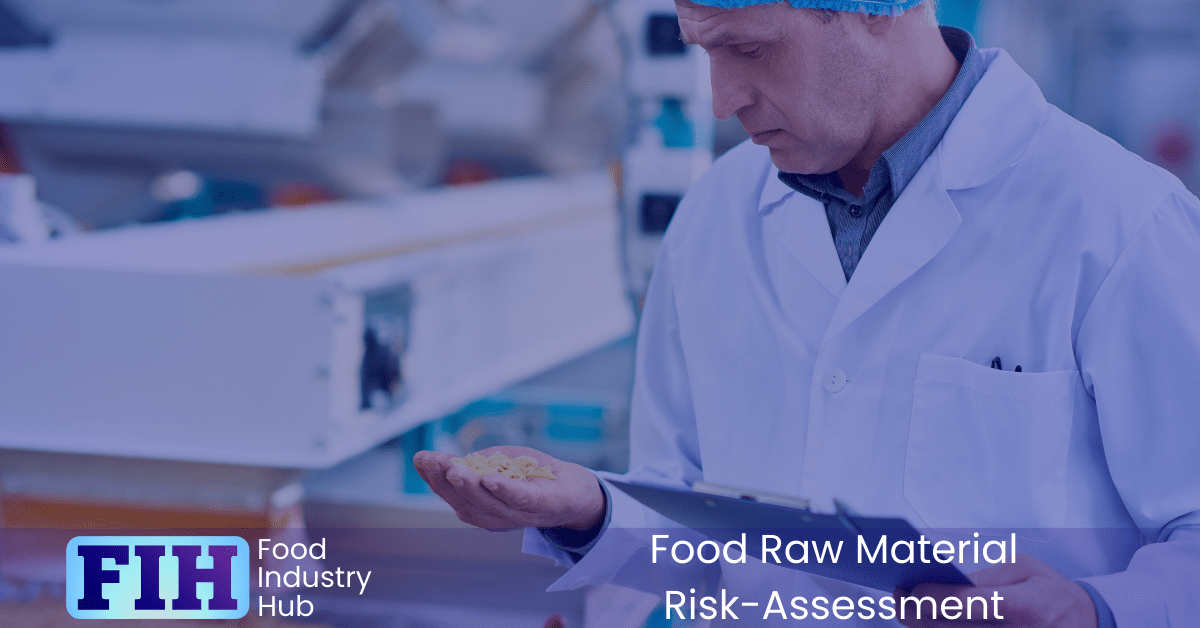
What Risk Parameters Are Included in a Raw Material Risk Assessment?
When conducting a raw material risk assessment, you begin by considering the risks associated with your suppliers and their manufacturing sites. It’s important to understand where your materials originate, how they are processed, and whether the suppliers operate within robust quality assurance systems. Factors such as geographical location, history of compliance, third-party certifications, and supply chain traceability all influence the risk profile. A well-documented and transparent supplier relationship reduces uncertainty and strengthens your ability to manage risks effectively.
The composition of the raw material is another important area for risk profiling. You need to evaluate the material’s makeup, including the percentage contribution of each component, country of origin, and the country of manufacture. Additives and processing aids, along with their regulatory limits and primary functions, must be clearly identified. Factors such as pH, moisture activity, and salt content further influence the material’s stability and its suitability for intended use, while durability and shelf-life considerations play a role in predicting its behaviour over time.
Allergen exposure presents one of the most immediate and high severity risks to address. You need to establish whether the material contains any regulated allergens in the jurisdiction where the food is processed and the intended market where it will be sold, whether there is a possibility of cross-contamination, or if it’s validated as “free-from.” Clear documentation of “contains,” “may contain,” and “does not contain” status is essential for each allergen.
Microbiological risks often take centre stage in food safety assessments. Depending on the material, you might need to consider spoilage microorganisms, pathogens, and the overall microbiological stability of the material. Specific parameters such as total viable count (TVC), yeast and mould counts, and pathogens like Salmonella must be assessed against defined targets and acceptable limits. Testing frequencies, whether at the supplier level or internally, should be aligned with the level of risk and the material’s intended application.
Chemical risks encompass a wide array of hazards, from naturally occurring toxins and heavy metals to pesticides and veterinary residues. Additionally, cleaning chemicals and process-related contaminants -such as acrylamide- could be present in certain materials. Each of these risks must be carefully evaluated against regulatory limits and your customer requirements. Proactive testing and supplier transparency are key to mitigating these chemical risks effectively.
You must also examine the quality attributes and acceptance criteria for each raw material. This includes visual, sensory, and physical properties, along with measurable characteristics such as colour, texture, and particle size. These attributes not only ensure that the material meets your technical specifications but also contribute to product consistency and consumer satisfaction. Any deviations from these criteria could result in rework, rejection, or product non-conformance.
Vulnerability to substitution, adulteration, and fraud is a growing concern in modern supply chains. Materials with a high economic value, such as spices, honey, or olive oil, are particularly susceptible. Your risk assessment should evaluate the authenticity risk of the material and consider the likelihood of economically motivated adulteration. This involves assessing traceability, supplier integrity, and the existence of robust testing protocols to confirm authenticity.
Dietary suitability and ethical or sustainability scheme compatibility are increasingly relevant in today’s market. You need to evaluate whether the raw material aligns with dietary claims, such as vegan, vegetarian, or gluten-free, and whether it adheres to ethical or sustainability standards like Fairtrade or Rainforest Alliance certification. These factors not only reflect consumer demand but also contribute to your corporate social responsibility goals.
Nutritional parameters also form an integral part of your risk assessment. Understanding the macro and micronutrient composition of a raw material is essential for nutritional labelling and compliance with labelling claims. Any variability in nutritional content can affect product claims, such as “low sugar” or “high fibre,” and must be monitored closely to avoid discrepancies.
Legislative and customer-specific risks add another layer of complexity. Compliance with local and international regulations is non-negotiable, and you must also consider any additional requirements imposed by your customers. This might include tighter specifications, third-party audits, or adherence to specific certification schemes. Failure to meet these requirements can result in lost contracts or, worse, regulatory action.
Finally, the packaging format of the raw material should not be overlooked. The material’s packaging must be fit for purpose, offering adequate protection during storage and transit while minimising environmental impact. Risks such as contamination, migration of packaging materials, or structural failures must be assessed. By considering packaging as part of your raw material risk assessment, you ensure that it supports both safety and sustainability objectives.

How Do Regulatory Standards Influence Raw Material Risk Assessments?
Regulatory standards play a pivotal role in shaping raw material risk assessments, ensuring that the materials you use comply with compositional, labelling, and usage requirements. For certain food items, such as milk and milk products, chocolate, or jams and preserves, legislative definitions dictate specific compositional standards. These requirements set clear parameters for permissible ingredients, minimum or maximum levels of key components, and even physical properties like texture or fat content. When assessing these materials, you must ensure they meet these legal definitions to guarantee regulatory compliance and avoid potential product mislabelling or enforcement actions.
Protected designation of origin (PDO) status introduces an additional layer of complexity. Products like Cornish cream are protected by law, requiring strict adherence to defined production methods and geographical origins. In your raw material risk assessment, it’s essential to confirm that suppliers can provide documented evidence of compliance with PDO requirements. This not only safeguards the authenticity of the final product but also ensures legal adherence to labelling laws, where misuse of a PDO name could result in significant reputational and financial penalties.
Food additives, often used as raw materials in manufacturing, are governed by stringent regulatory frameworks. Additives such as colourings, preservatives, and flavour enhancers have maximum allowable use levels that vary depending on the food category of the final product. A robust risk assessment accounts for these legal limits, considering both supplier documentation and your own formulations. Failure to align with these use rates could result in non-compliance, product recalls, or consumer safety concerns.
Whenever raw materials are subject to regulatory restrictions or requirements, these must be explicitly acknowledged and documented in your risk assessment. This means going beyond a cursory review and integrating legal considerations into the decision-making process for raw material approval. By thoroughly addressing regulatory standards in your risk assessment, you not only ensure compliance but also reinforce consumer trust and maintain the integrity of your brand.
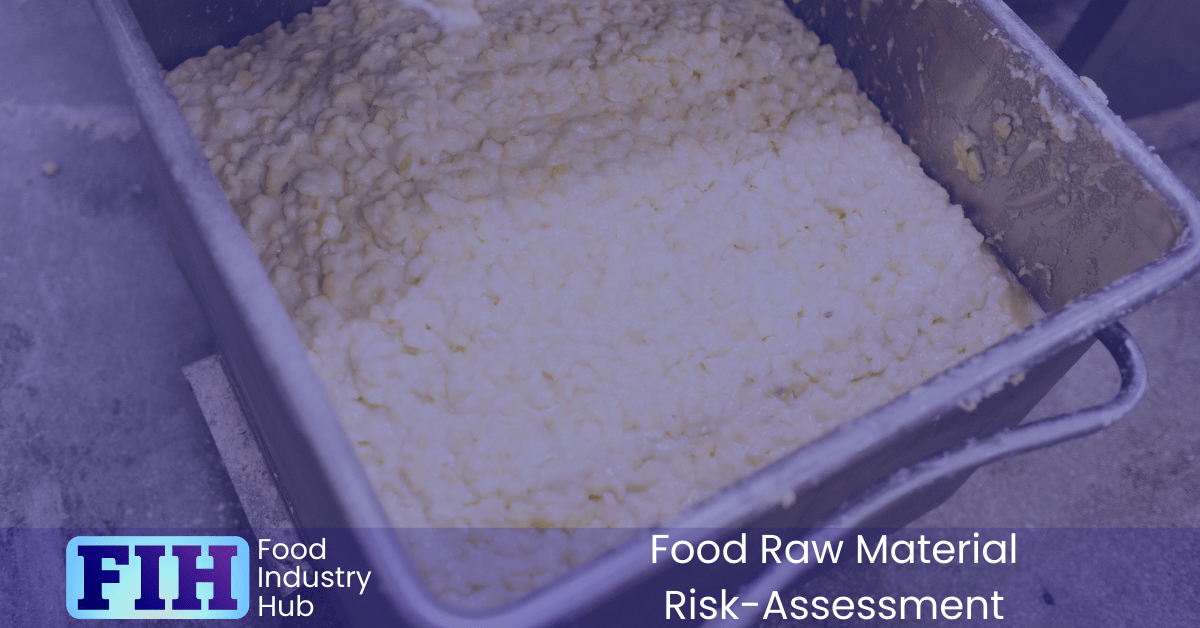
Sign-up for the Food Industry Hub Mail Service
We regularly produce new content for food industry professionals, and the Food Industry Hub Mail Service is the best way to stay up to date with the latest additions.
Signup today to be added to the Food Industry Hub mailing list.
Supplier and Manufacture Site Details
The supply route for a raw material plays a significant role in shaping its risk profile, even when the raw material is identical across multiple suppliers. Variations in how suppliers source, process, and deliver raw materials can introduce inconsistencies or vulnerabilities into your supply chain. For example, a direct supply route from a trusted, transparent manufacturer may carry lower risks compared to a multi-tiered supply chain involving intermediaries. These complexities should be clearly mapped and evaluated in your risk assessment, ensuring you fully understand the potential exposure at each stage of the supply journey.
Manufacture sites also contribute unique risks that need careful evaluation. Different sites may handle varying allergens, which directly affects the potential for cross-contact and must be reflected in your allergen management strategy. For instance, one site producing your raw material might handle peanuts as part of its operations, while another does not. This variability requires you to scrutinise not only the allergen controls at each site but also the validation of any allergen claims/declarations. Your risk assessment should detail these differences to ensure you’re mitigating risks appropriately, especially when combining raw materials from multiple sources.
The complexity of the supply chain and the assurance systems operated by manufacturers further influence raw material risks. Longer, more intricate supply chains inherently have a greater vulnerability to economically motivated food fraud, as opportunities for substitution or adulteration increase with each additional link. Conversely, robust assurance systems—such as certification schemes or supplier audits—can mitigate risks by demonstrating strong traceability and control mechanisms. Your assessment should weigh both factors, acknowledging where complexities raise concerns and where effective systems lend confidence in the raw material’s integrity.
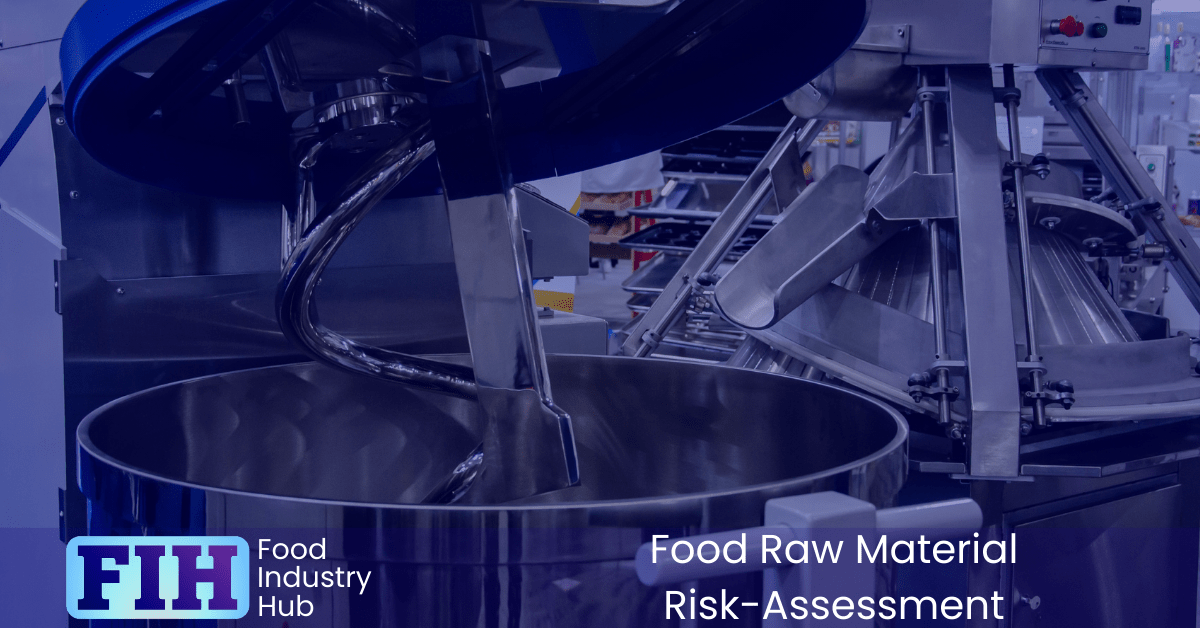
Composition
The composition of a raw material inherently carries risks that must be carefully evaluated in your risk assessment, particularly in the context of regulatory compliance. Specific components within a material, such as additives or preservatives, may be subject to legal restrictions, including maximum allowable levels that vary by market or food category. Understanding the full breakdown of a raw material’s composition is crucial to identifying potential red flags and ensuring that your finished product meets both regulatory and customer expectations.
The country of origin and manufacture for each component within a raw material significantly influence its risk profile. Regional agricultural practices, environmental conditions, and local regulations all contribute to the safety and stability of raw materials.
Moisture content or water activity levels can affect the material’s susceptibility to microbiological growth or spoilage. Similarly, high salt content might act as a preservative, reducing microbial risks but potentially introducing quality or health concerns.
Your risk assessment should integrate these compositional stability parameters alongside geopolitical or geographic risks, providing a well-rounded understanding of how the material’s makeup aligns with your product requirements.
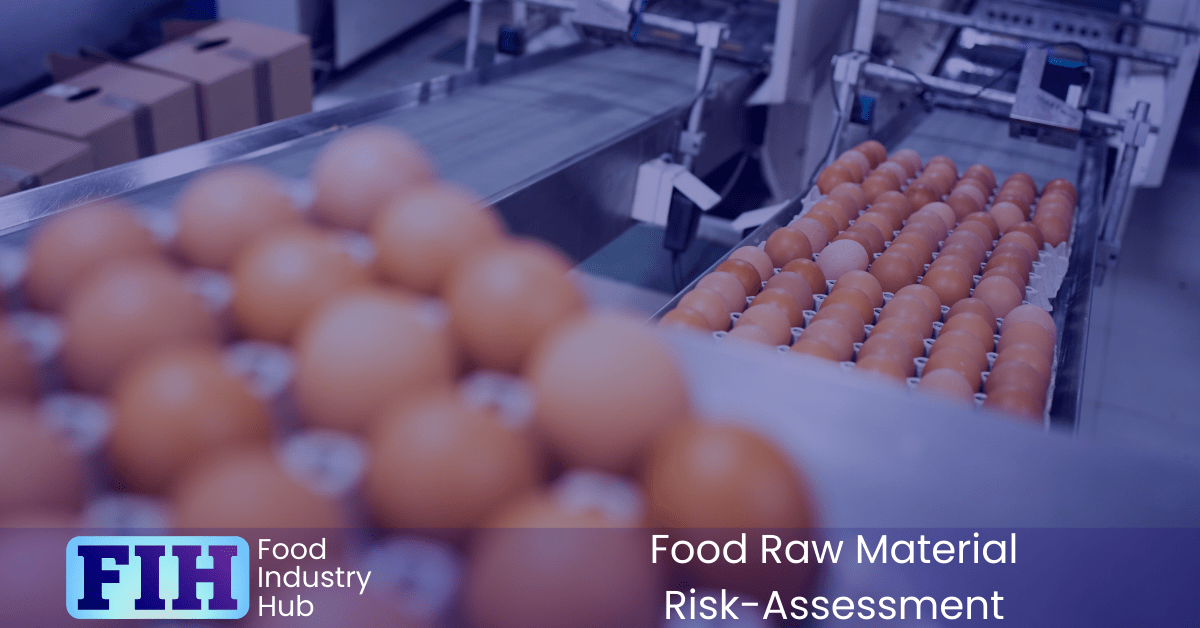
Allergen Exposure
Allergen exposure is a critical parameter in any raw material risk assessment, particularly in the context of the 14 European allergens, which include milk, eggs, peanuts, tree nuts, sesame, cereals containing gluten, soybeans, celery, mustard, lupin, molluscs, crustaceans, fish, and sulphur dioxide. For each raw material, you need to determine whether these allergens are intentionally present, either as part of the formulation or due to inherent characteristics. This information forms the foundation of your allergen risk management and helps ensure accurate allergen labelling for your finished products.
The risk of adventitious allergen exposure —commonly referred to as “may contain”— adds another layer of complexity. Manufacturers handling allergens on the same production lines as your raw material introduce a higher level of cross-contact risk compared to those managing allergens on separate equipment within the same site. You must evaluate the allergen handling protocols of your suppliers, as even minor inconsistencies in cleaning or segregation procedures can compromise the integrity of your raw material. These risks must be carefully assessed and communicated to ensure that your finished product labelling aligns with regulatory requirements and customer expectations.
Understanding the difference between “does not contain” and “validated free-from” is essential when managing allergen risks. A “does not contain” claim simply indicates that allergens are not intentionally added, whereas a “validated free-from” claim requires robust evidence, including comprehensive validation and verification of processes, to confirm that the allergen is absent beyond a detectable level. These distinctions are critical in ensuring transparency and maintaining consumer trust, particularly for products marketed to allergen-sensitive individuals or groups.
Your allergen risk assessment should also reflect the allergen handling policies outlined in your HACCP plan. Some manufacturing sites permit certain allergens while completely excluding others. For example, a facility producing nut-free products may allow milk and egg allergens but disallow peanuts and tree nuts altogether. These site-specific restrictions play a pivotal role in determining the suitability of raw materials and ensuring compliance with your operational allergen management strategy.
Supply chain complexity can further exacerbate allergen risks, especially when raw materials are sourced from multiple suppliers or regions with differing allergen regulations. The presence of allergens in transportation processes can also introduce unanticipated risks. Clear documentation and communication with your suppliers are critical in mitigating these risks, ensuring traceability, and validating the allergen-free status of your raw materials where applicable.
Ultimately, effective allergen management requires a holistic approach that integrates regulatory, operational, and customer-focused considerations. By thoroughly assessing both intentional and adventitious allergen exposure, you can ensure that your raw materials meet the safety and quality standards necessary to protect your consumers, comply with legislation, and maintain the integrity of your brand.
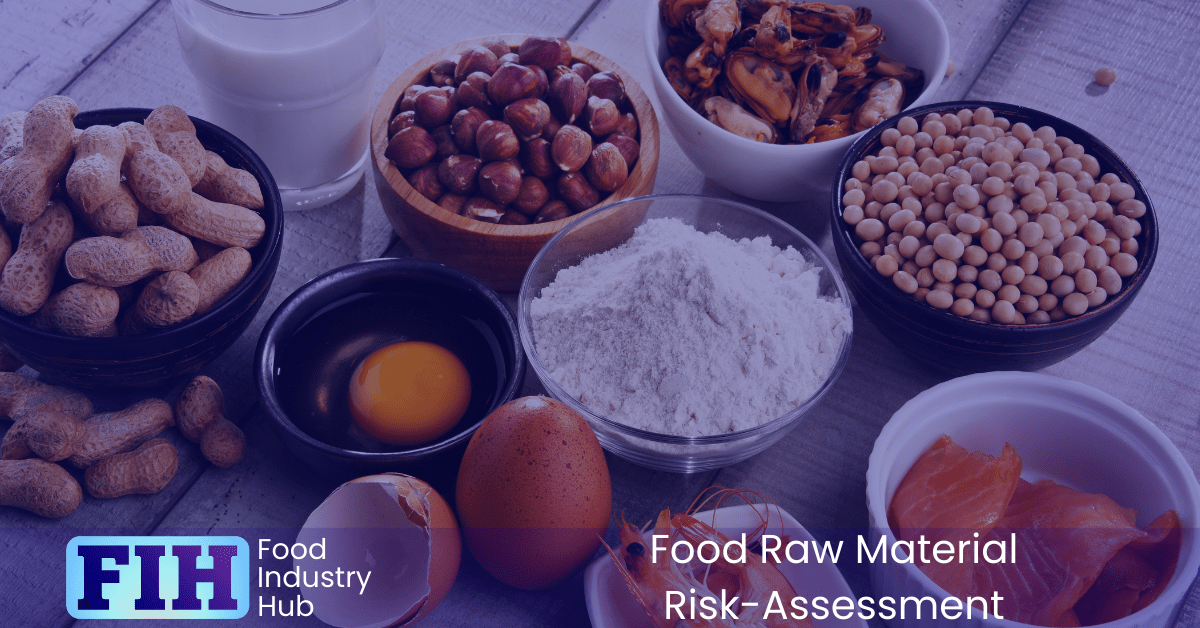
Microbiological Risks
Microbiological risks in raw materials are a key consideration in ensuring product safety and quality. Spoilage microorganisms, such as yeast, mould, and certain bacteria, can compromise the shelf life and sensory attributes of your finished product. These organisms are often influenced by factors like water activity (aw), pH, and storage conditions of the raw material. Pathogenic microorganisms, such as Salmonella, Listeria monocytogenes, and Escherichia coli O157 pose a more severe threat as they can cause foodborne illnesses. Identifying the potential for contamination by both spoilage and pathogenic microorganisms is an essential step in your risk assessment.
The microbiological stability of a raw material is another prominent factor that can directly impact the safety of your finished product. Stability is often determined by the intrinsic properties of the material, such as salt concentration, moisture content, and preservatives. For example, high-acid products like fruit juices may naturally inhibit the growth of certain pathogens, while low-acid, high-moisture products like raw meat are more susceptible to microbial proliferation. Understanding these stability factors allows you to anticipate potential risks and implement appropriate controls.
Microbiological testing forms the backbone of monitoring and verification activities. Specific parameters such as total viable count (TVC), coliform levels, and the presence or absence of specific pathogens should be identified based on the nature of the raw material and its intended use. Testing frequencies should align with the risk profile of the material, supplier performance history, and the conditions of use of the raw material. High-risk raw materials may warrant more frequent testing and tighter monitoring to ensure safety and compliance.
Setting target and acceptable microbiological limits is fundamental in evaluating raw material conformance. These limits should be guided by regulatory standards, industry best practices, and customer requirements. For example, raw milk used for cheese production might have strict pathogen limits but more lenient spoilage thresholds, reflecting its processing and storage conditions. By establishing and enforcing clear microbiological specifications, you can ensure that incoming raw materials meet the necessary standards to support food safety, quality, and regulatory compliance across your operations.
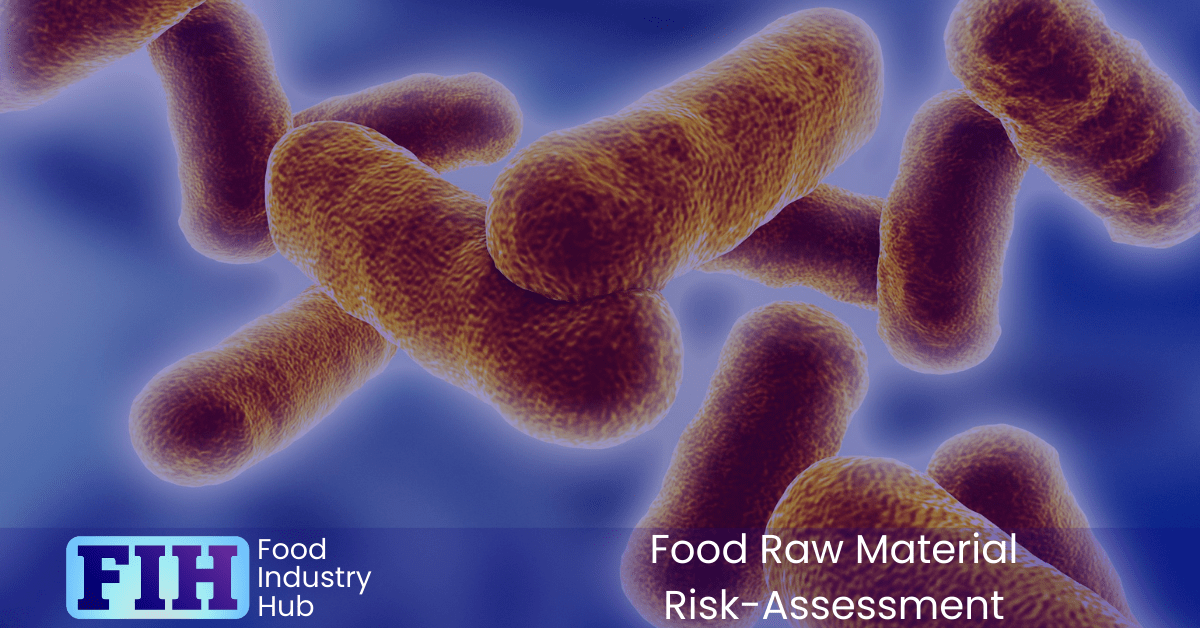
Chemical Risks
Chemical risks in raw materials are a critical focus in any raw material risk assessment due to their potential to compromise both product safety and regulatory compliance. Toxins such as mycotoxins -including aflatoxins and ochratoxin A- can occur naturally in agricultural products like cereals and nuts. These toxins are tightly regulated due to their implications for consumer health, and rigorous monitoring is essential to ensure levels remain below permissible limits.
Heavy metals, such as lead, cadmium, mercury, and arsenic, are another key concern. These elements can accumulate in raw materials through soil contamination, industrial pollution, bioaccumulation, or irrigation practices. The presence of heavy metals in excess of legal thresholds can lead to serious health implications and recalls. Your risk assessment should consider the raw material’s origin, as geographic regions with a history of industrial activity or mining are often at higher risk.
Pesticide residues must also be carefully evaluated, especially in raw materials derived from intensive agricultural practices. While pesticides are useful for protecting crops, their residues must fall within maximum residue limits (MRLs) established by regulatory authorities. In parallel, veterinary drugs and antibiotics used in animal husbandry can pose a risk when present in raw materials like milk, meat, or eggs. Monitoring programs for these substances help ensure compliance with stringent legal limits and customer specifications.
Chemical contamination risks also extend to cleaning chemicals and process aids used during raw material preparation and processing. For example, improper rinsing of equipment can lead to residual cleaning agents in the final product.
Degradation products, such as free fatty acids (FFA) and peroxide value (PV), present additional challenges, particularly in raw materials like oils and fats. These parameters indicate the extent of hydrolysis and oxidation, which can negatively impact product quality and safety. For instance, elevated PV levels may produce off-flavours and increase the risk of rancidity in the finished product. Monitoring these indicators is crucial, especially for raw materials with extended storage periods or those subjected to fluctuating temperatures.
Robust testing and monitoring programs are indispensable tools in managing chemical risks. Analytical techniques such as gas chromatography, atomic absorption spectroscopy, and high-performance liquid chromatography (HPLC) are commonly employed to detect and quantify chemical contaminants. Testing frequencies should be tailored to the inherent risk level of the raw material, the supplier’s track record, and any historical trends.
By systematically evaluating chemical risks and implementing comprehensive monitoring protocols, you can safeguard both product integrity and consumer safety. This proactive approach not only ensures regulatory compliance but also builds trust with customers by demonstrating a commitment to quality and due diligence throughout the supply chain.
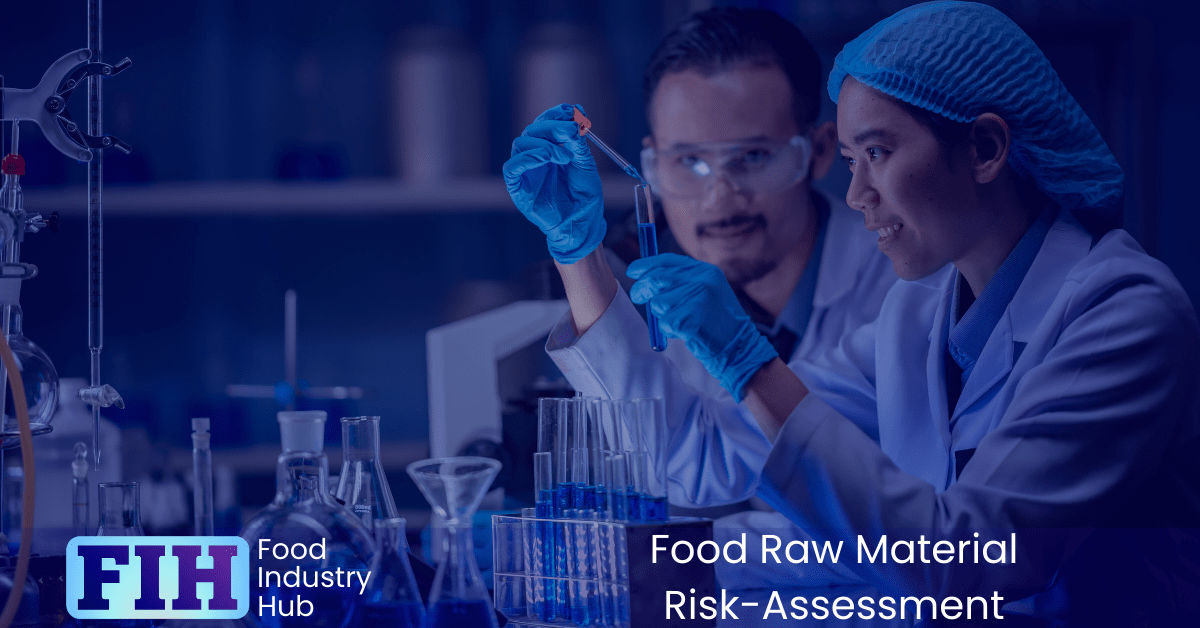
Quality Attributes and Acceptance Criteria
Quality attributes and acceptance criteria are essential for ensuring raw materials consistently meet the standards required for food manufacturing. The supplier’s Certificate of Analysis (COA) provides a foundational reference for assessing quality parameters. However, these parameters must be independently verified through physical inspection and laboratory testing to ensure compliance with internal standards and to validate supplier claims.
Physical parameters are often critical indicators of raw material quality. Characteristics such as piece size, thickness, or weight are typically assessed through measurements like sieve analysis or weight grading. These measurements are especially important when consistency is a key requirement for the manufacturing process, as deviations in physical attributes can lead to inefficiencies or product non-conformance.
Organoleptic properties, including appearance, texture, flavour, and aroma, present another important aspect of quality assessment. For example, spices must deliver consistent colour and aroma to ensure the finished product meets consumer expectations. Regular organoleptic testing helps to identify subtle variations that could impact product quality, particularly for raw materials subject to seasonal or regional variation.
The presence of defects, such as misshaped or discoloured units, must be carefully monitored. Maximum acceptable levels of defects should be outlined in a quality attribute sheet (QAS) or supplier specification. This QAS serves as a benchmark for identifying whether a batch of raw material is acceptable or requires corrective actions, such as re-sorting or rejection.
Contaminants such as extraneous vegetable matter (EVM), foreign objects, or other physical contaminants must be managed within strict tolerances. For example, small amounts of EVM might be tolerable for agricultural raw materials but must remain below established thresholds to avoid quality and safety issues. The assessment of contaminants is often informed by the type of raw material and the risks inherent to its supply chain.
The QAS is a valuable tool for capturing the agreed-upon specification limits for raw materials. It defines all critical quality parameters, including maximum tolerances for defects, contaminants, and physical properties. By aligning with this document, you can set clear expectations for suppliers and streamline the evaluation of raw materials upon delivery.
Defects and contaminants, even when within acceptable levels, can have significant implications for the finished product. For instance, an elevated level of discoloured units in dried fruit might compromise the visual appeal of a cereal product. Similarly, tolerances for contaminants must consider downstream risks, such as the potential for consumer complaints or regulatory scrutiny.
A robust approach to defining and enforcing quality attributes ensures that raw materials support both product quality and operational efficiency. When suppliers consistently meet these criteria, manufacturing processes run smoothly, reducing waste and the likelihood of non-conforming product. Clear, detailed acceptance criteria also facilitate swift resolution of quality issues, whether through supplier feedback or by initiating corrective actions.
Ultimately, maintaining rigorous quality standards for raw materials is a cornerstone of producing safe, high-quality finished products. It reflects not only the operational priorities of the business but also its commitment to consumer satisfaction and regulatory compliance. By integrating quality attributes into the broader risk assessment framework, you establish a proactive approach that enhances reliability and trust throughout the supply chain.
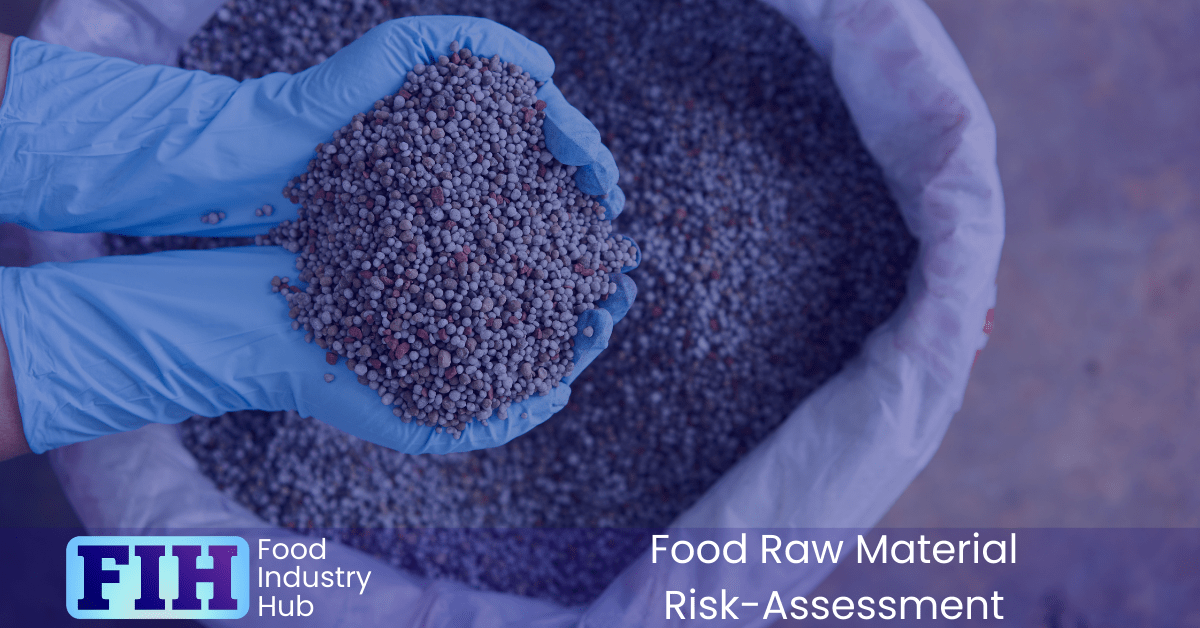
Vulnerability to Economically Motivated Food Fraud
Vulnerability to economically motivated food fraud is a critical concern for raw material risk assessments, particularly for high-value ingredients with a history of fraud or substitution. Historical instances, such as the adulteration of olive oil with cheaper vegetable oils or the substitution of honey with sugar syrups, demonstrate how economic incentives drive fraudulent activities. These examples underscore the importance of vigilance and the need to consider past incidents when evaluating the fraud risk of raw materials.
The economic value of a raw material plays a significant role in determining its vulnerability. High-value ingredients, such as saffron, vanilla, or premium meat cuts, are particularly susceptible to substitution or adulteration because the potential financial gain for fraudsters is substantial. This vulnerability increases during periods of pricing volatility, as dramatic price shifts can create both incentives and opportunities for fraud within the supply chain.
Access controls at manufacturing sites are vital for mitigating food fraud risks. If access to raw materials is poorly managed, it increases the likelihood of intentional tampering or substitution. Robust measures, such as restricted access zones, clear accountability for handling materials, and security audits, help to prevent unauthorised interference and ensure the integrity of raw materials from receipt through production.
Equally critical are access controls during storage and distribution. Raw materials stored in unmonitored or unsecured facilities are vulnerable to substitution or contamination at any point in the supply chain. Controlled access, coupled with detailed records of inventory movement and regular inspections, reduces the risk of economically motivated fraud.
Supply chain complexity amplifies the risk of fraud. Materials sourced through multiple intermediaries or from regions with limited regulatory oversight are inherently more vulnerable. The longer and less transparent the supply chain, the greater the opportunities for fraudulent activities to occur undetected. Streamlining supply chains and building relationships with trusted suppliers can mitigate these risks while enhancing overall supply chain resilience.
The confidence (or lack thereof) that analytical testing would identify fraud is another pivotal factor. For some raw materials, such as those with distinctive isotopic profiles, advanced analytical methods can provide robust assurance against substitution or adulteration. However, for others, testing may be less definitive. Understanding the limitations of testing methods and integrating them with other controls, such as supplier audits and traceability systems, strengthens fraud prevention strategies.
The frequency of routine testing for fraud prevention depends on the risk profile of the raw material and the supply chain. High-risk materials with historical instances of fraud or a high economic value may warrant regular testing as part of an ongoing assurance program. Targeted testing during periods of market volatility or supply disruptions is also an effective approach to address emerging fraud risks.
The nature of the raw material further influences its fraud vulnerability. Raw materials with homogenous appearance or chemical composition, such as powdered spices or oils, are often easier to adulterate without detection. Conversely, raw materials with distinct physical characteristics or limited market substitutes are less likely to be tampered with. By considering these attributes alongside economic and supply chain factors, you can develop a comprehensive strategy to mitigate the risk of economically motivated food fraud.
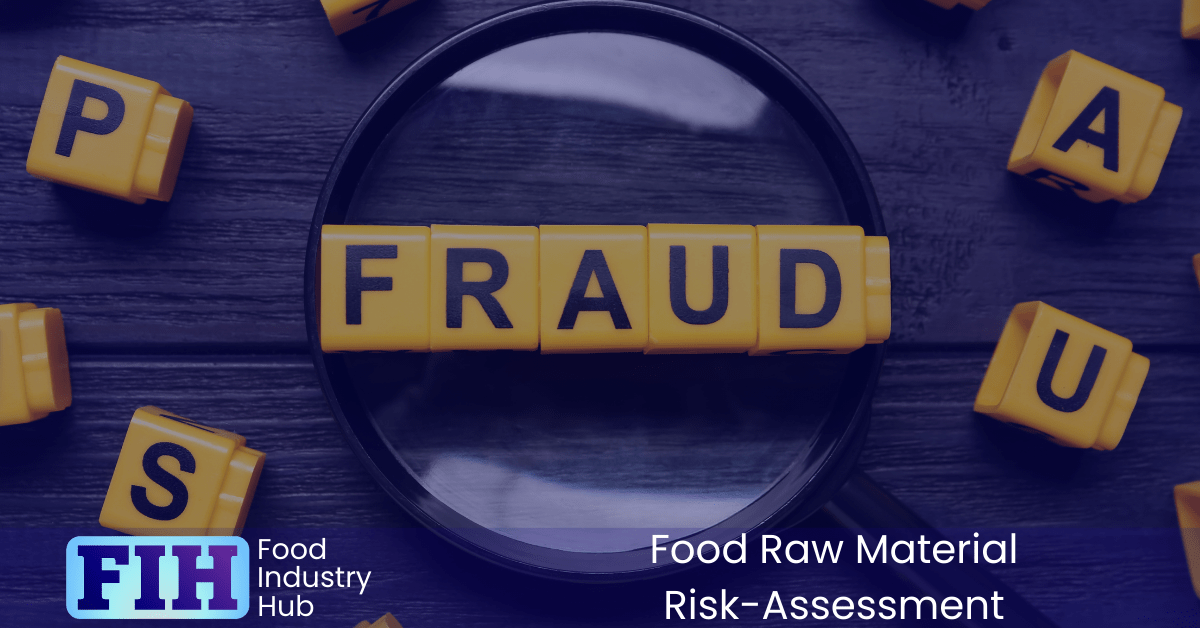
Dietary Suitability and Sustainability Scheme Compatibility
Dietary suitability and sustainability scheme compatibility are integral to ensuring raw materials align with both product claims and consumer expectations. If a finished product makes claims such as “vegan,” “kosher,” or “halal,” these dietary requirements must be supported by the raw materials used. This means verifying not only the absence of incompatible ingredients but also the adherence of raw materials to the relevant certification or processing standards. Failure to substantiate these claims could lead to consumer dissatisfaction, legal implications, and reputational damage.
For dietary suitability, certifications such as kosher and halal require documentation from accredited auditing bodies confirming compliance with scheme requirements. Similarly, for vegetarian and vegan claims, raw materials must be scrutinised for cross-contamination risks, shared processing equipment, or hidden animal-derived components such as gelatines or coagulants. Ensuring transparency and working closely with certified suppliers helps establish the credibility of these claims.
Sustainability schemes add another layer of complexity to raw material risk assessments. Certifications like the Roundtable on Sustainable Palm Oil (RSPO) and ethical initiatives such as Fairtrade or Free Range address the growing consumer demand for responsible sourcing. These schemes often involve specific categories, such as “book and claim,” “mass balance,” or “segregated,” which define how raw materials are tracked and verified through the supply chain. Understanding these distinctions is essential to ensure that the raw materials meet the desired level of sustainability and ethical compliance.
Auditable requirements, such as chain-of-custody documentation, supplier verification processes, and independent certification, are critical to maintaining trust in dietary and sustainability claims. Suppliers must provide comprehensive evidence that raw materials align with the specified scheme or dietary standard, including traceability back to the source. Routine audits, clear documentation, and robust verification systems strengthen the credibility of claims while reducing the risk of misrepresentation. In embedding these practices into your raw material risk assessments, you reinforce both the integrity of your finished products and your commitment to ethical and sustainable practices.
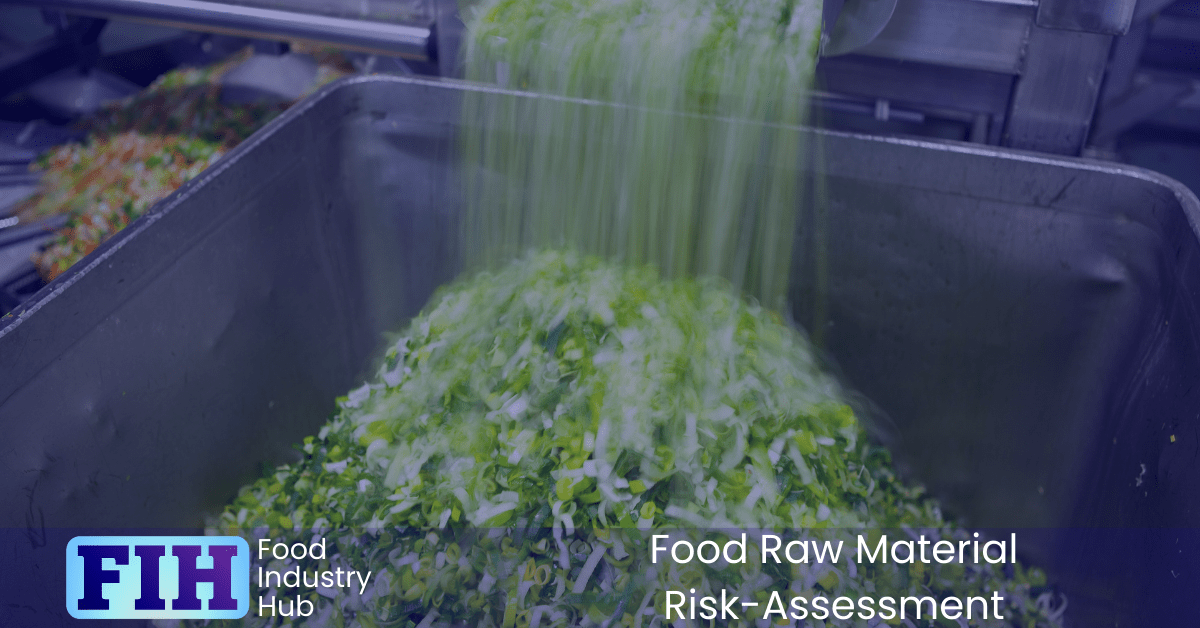
Nutritional Information
Nutritional information for raw materials plays a pivotal role in accurately determining the nutritional profile of finished products. The nutritional parameters provided by suppliers—such as energy values, macronutrient content, and specific details like salt or sugar levels—are directly used in the calculation of product labels and marketing claims. Any inaccuracies at this stage can cascade into errors on finished product packaging, potentially leading to non-compliance with regulatory requirements or customer specifications. This risk is heightened for products that emphasise health claims or cater to specific dietary needs, as even minor deviations in raw material nutritional data can significantly alter the final product profile.
Inaccurate nutritional information also risks misalignment with customer or retailer guidelines. For instance, some retailers set strict caps on nutrient levels, such as salt or sugar, for specific product categories. A material like olives, inherently high in salt, could cause an olive bread to exceed the retailer’s limits for bread products due to the contribution of salt from the raw material. Such risks must be identified during the raw material risk assessment to ensure compatibility with customer expectations and regulatory standards. Proactive measures, including validation of supplier-provided data and regular testing of raw materials, help maintain the integrity of nutritional calculations and protect the credibility of your finished products.
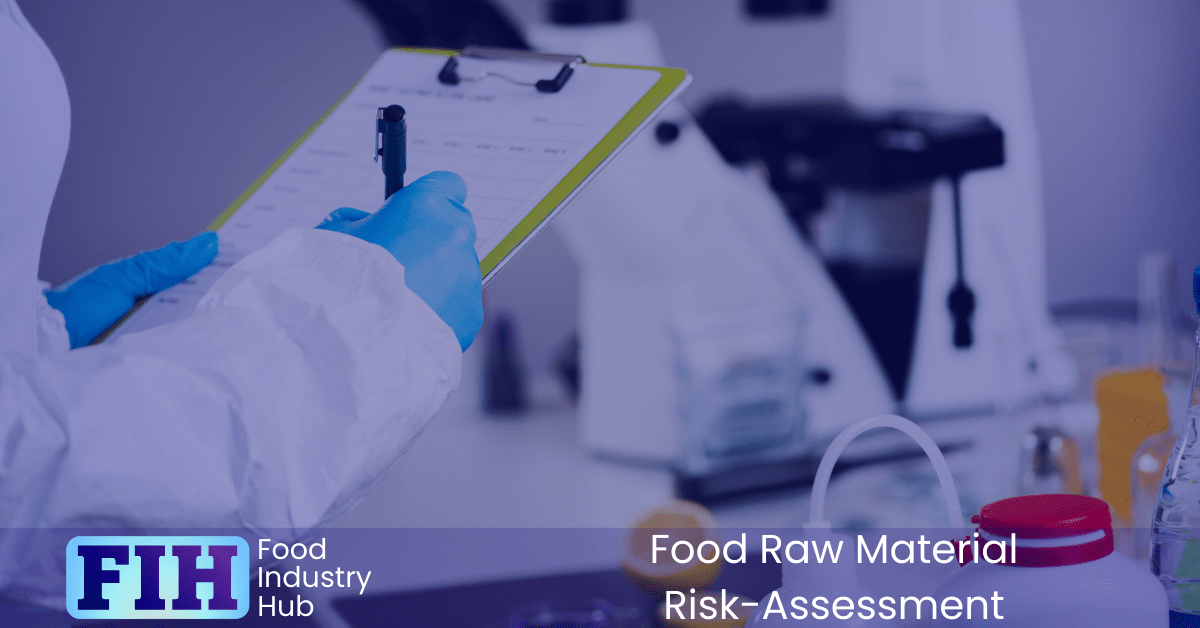
Legislative Control and Customer Requirements
Legislative controls are highly influential over raw material risk assessments – ensuring compliance with the regulations that govern composition, processing, and labelling. For example, directives for chocolate products specify the minimum percentage of cocoa solids required for different classifications, such as milk chocolate or dark chocolate. These compositional requirements influence the selection of raw materials, as any deviation could render the finished product non-compliant. Similarly, processing directives, such as the mandated time and temperature combinations for pasteurising milk, set critical parameters that directly impact raw material suitability and safety.
Regulations also define maximum permitted levels for additives, such as preservatives, colorants, and flavour enhancers. These limits are often category-specific, meaning the allowable level for a given additive may vary depending on the type of food product in which it is used. For instance, nitrates used in processed meats must adhere to strict thresholds to ensure both safety and compliance. When raw materials exceed these regulatory limits or fail to align with finished product specifications, they present a risk that must be addressed through substitution, reformulation, or supplier controls.
Labelling requirements further underscore the importance of legislative compliance. The names used to describe flavouring materials—such as “smoke flavouring,” “natural X flavouring,” or “process flavouring”—are tightly regulated and must reflect their composition and production methods. Mislabelled raw materials can result in inaccurate or misleading product claims, exposing your business to reputational and legal risks.
In addition to legal requirements, customer-specific demands often add another layer of complexity. For instance, while a Global Food Safety Initiative (GFSI)-recognised certificate is typically sufficient to demonstrate manufacturing site assurance, some retailers may require full audit reports. These enhanced requirements necessitate closer collaboration with suppliers to secure the necessary documentation and ensure that the raw material and its source meet heightened scrutiny. By addressing both regulatory and customer-specific needs, you can safeguard the compliance and marketability of your finished products.
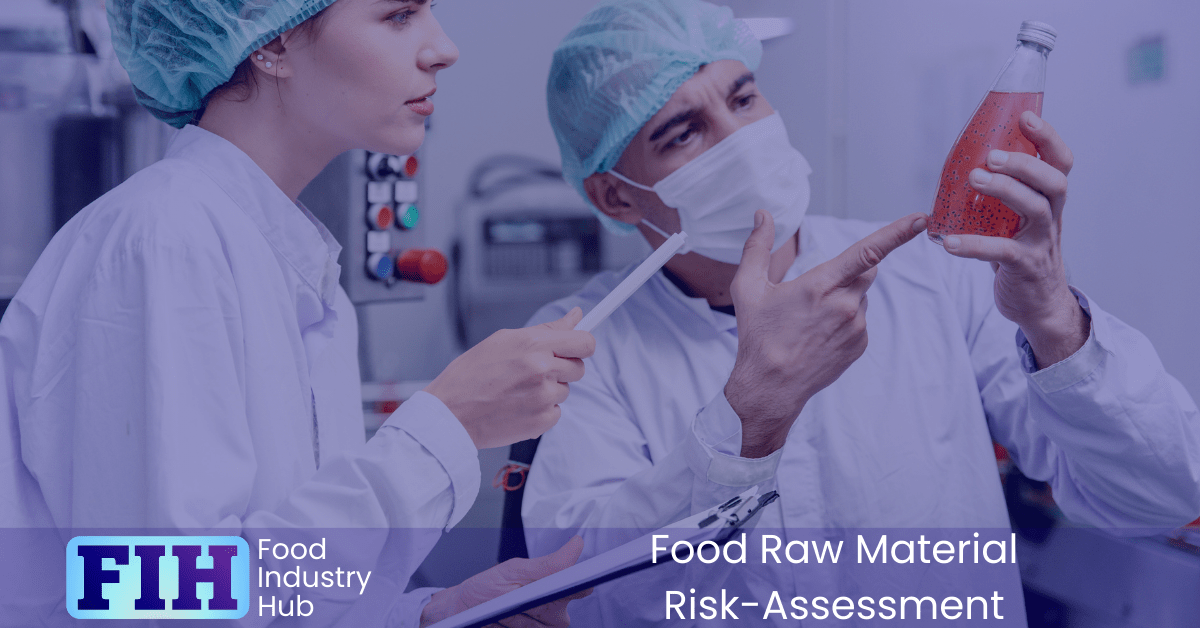
Packaging Format
The packaging format for raw materials is a critical consideration in minimising risks to food safety and quality. One important factor is the use of high-contrast colours for food-contact packaging materials, which make it easier to visually identify contamination if fragments of the packaging end up in the raw material. For instance, bright blue or other distinct colours that stand out against most food products are commonly used to reduce the likelihood of undetected contamination, ensuring a more reliable visual inspection process. This not only supports compliance with food safety standards but also enhances consumer confidence in the integrity of the finished product.
Staple-free packaging and wood-free production zones are also essential considerations, particularly in open product areas where physical contaminants pose a higher risk. Wooden pallets can splinter or shed, introducing foreign material into the food production environment. To mitigate these risks, many facilities require raw materials to be delivered in packaging free from staples and mandate the use of plastic pallets rather than wooden ones for moving stock through open-product areas. These measures significantly reduce the potential for contamination, ensuring that raw material packaging aligns with stringent food safety protocols and the operational requirements of the production site.
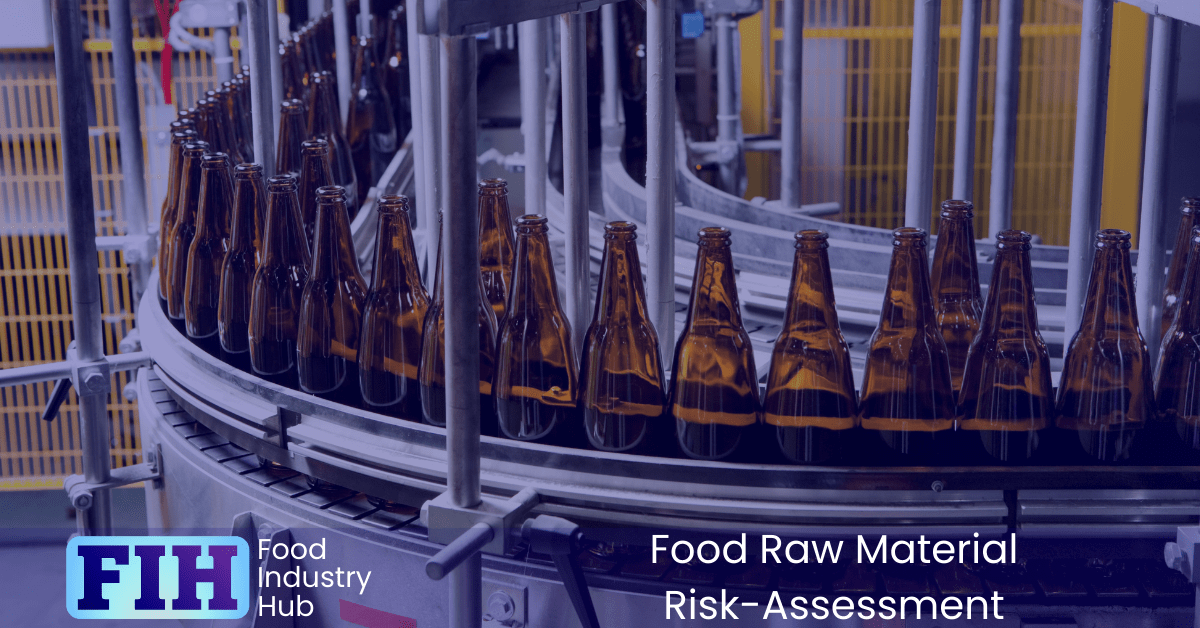
In Summary
A thorough raw material risk assessment is essential for maintaining the safety, quality, and compliance of food manufacturing operations. By systematically evaluating risks associated with composition, allergens, microbiological and chemical hazards, quality attributes, and supply chain vulnerabilities, you can ensure that every raw material meets the highest standards. Incorporating considerations such as regulatory requirements, customer demands, and sustainability commitments strengthens your position as a trusted supplier in a competitive market. Effective risk assessments are not just about identifying issues—they’re about implementing proactive measures to prevent them.
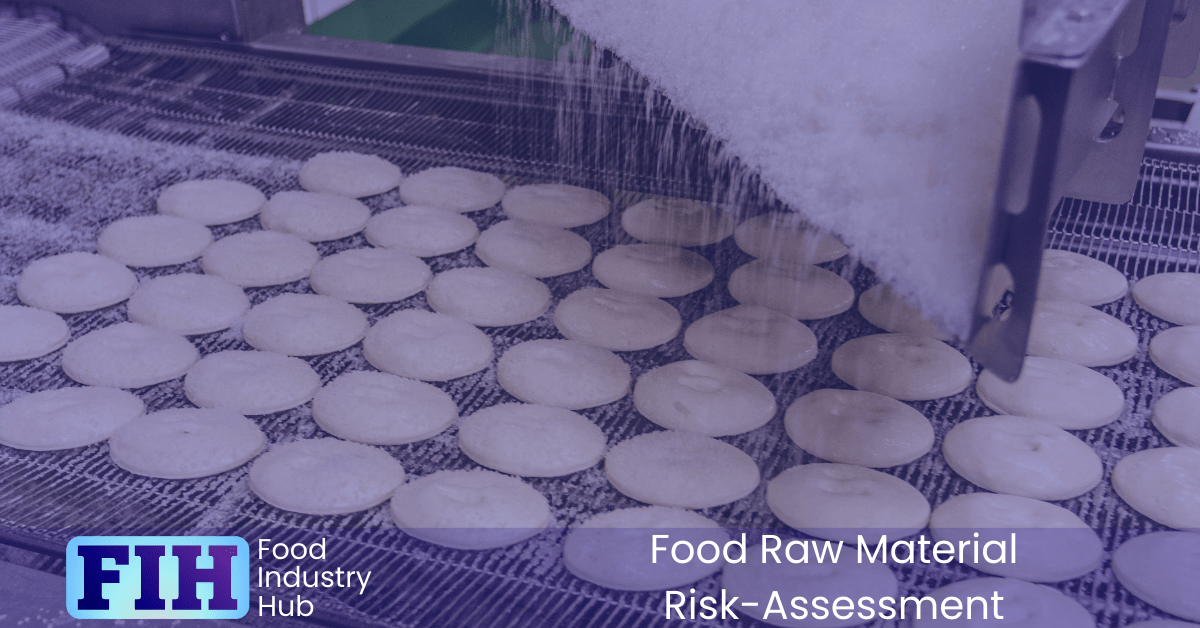
Further Resources
Food Industry Hub serves the food industry with a range of digital resources for the benefit of both commercial food manufacturers and food industry professionals.
For food manufacturers, we offer integrated management systems that give every user a direct interface with your QMS.
For food industry professionals, we provide an extensive signposting service in addition to informational content we hope you’ll find useful as you face new professional challenges. We have very ambitious plans to expand the range of services offered, and currently present informational content on management, safety and quality, food safety and quality culture, and professional success.

